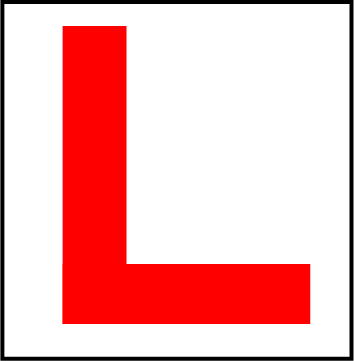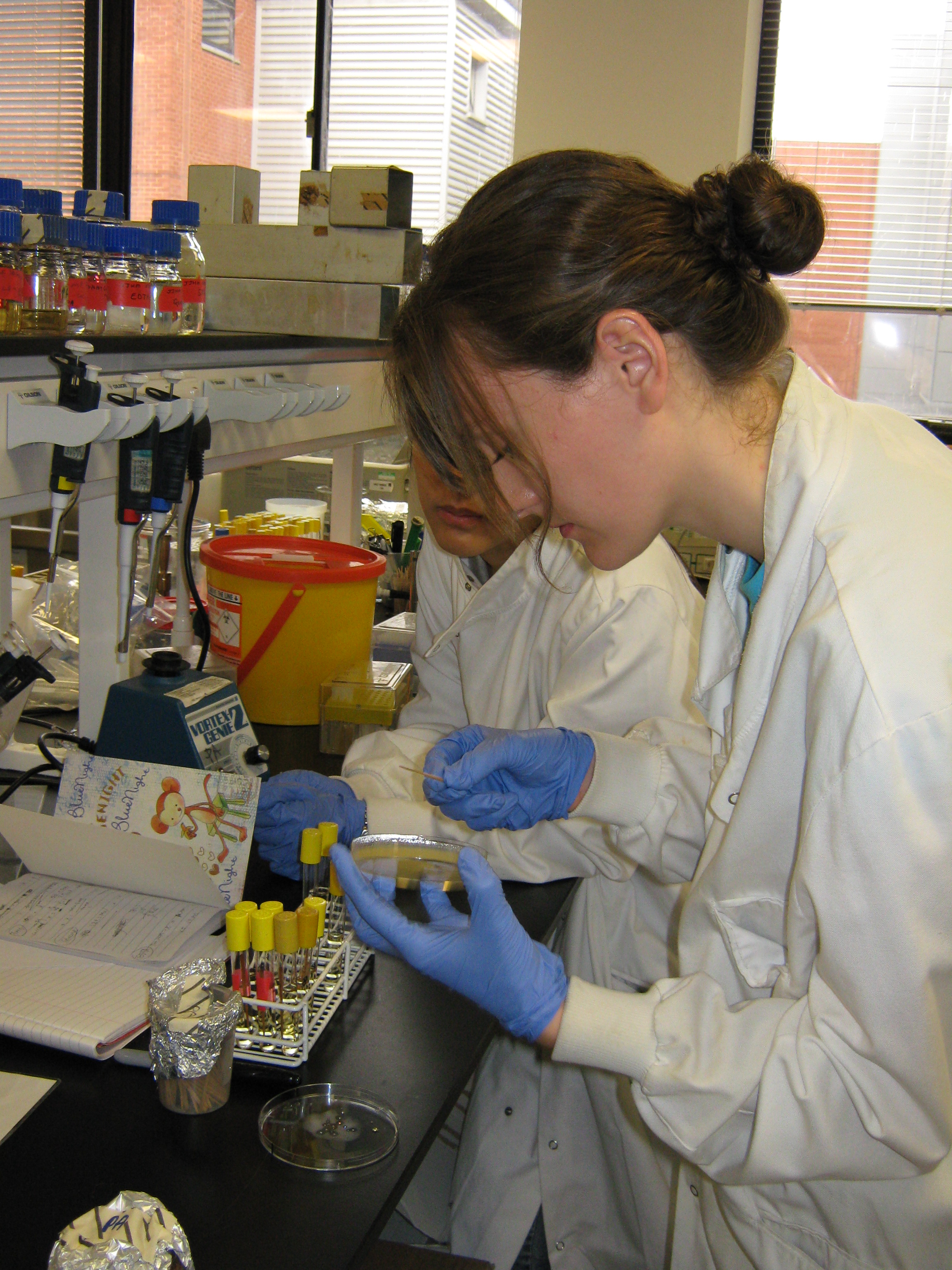Team:Newcastle/IntroductoryLabwork/7 July 2009
From 2009.igem.org
Introductory Lab Session: 7th July 2009
Experiment summary so far...
Yesterday, we attempted to transform cultures with BioBricks. We inserted the three BioBricks into competent E.coli cells grown in the previous lab session (via plasmids) and grew them overnight. The cells were spread on plates in both undiluted and diluted forms. The diluted solution of competent E.coli cells were spread onto three different plates - a negative control plate, a positive control plate and a plasmid plate (see table above). Today we reviewed the cultures which grew on the plates and prepared them for plasmid extraction and purification - this will form tomorrow's experiment.
Observations
Firstly, none of the E.coli cells mixed with BioBrick 1 (in the presence of competence inducers) took up the DNA - they didn't appear on the diluted or undiluted plates, which were lined with ampicillin. However the E.coli cells which had been mixed with BioBricks 2 and 3 did take up the DNA as they were present in colonies on ampicillin-covered plates. There were two colonies of bacteria which had been transformed by BioBrick 2, and eight colonies transformed by BioBrick 3. These 10 cultures became the focus of the subsequent experiments.
Preparation of Solutions
To prove that the DNA the E.coli cells had taken up really was the BioBrick added to the solution, we need to carry out the procedure of DNA electrophoresis with the aid of restriction enzymes. In order to carry out this step, we need to extract and purify the plasmids first (to be done tomorrow) via alkaline lysis - this requires three solutions, two of which were made today.
Solution 1
According to Dr. Aldridge's protocol named "Phil’s mini method for Alkaline Lysis for Mini Prep", we need to add 'solution 1' (along with an RNAse) to resuspended transformed E.coli cells, tomorrow. Solution 1 requires the following ingredients at the following concentrations:
* 50 mM Glucose * 25 mM Tris.Hcl (pH 8.0) * 10 mM EDTA (pH 8.0)
This solution was made today in preparation for tomorrow's exercise. We were told that the total volume should be 250ml. We were presented with pre-made solutions - 1M Tris HCl and 0.5M EDTA - and were told we needed to calculate the correct volumes of each of these solutions to be added to the beaker to give the desired molarity.
We were presented with glucose in it's solid form and asked to make a stock solution of 1M glucose; after which we were asked to calculate the amount to glucose solution to add to the beaker to make a molarity of 0.5M! The following equation helped:
Molecular Weight x Desired Volume (Litres) x Molarity = Weight (grams)
- Making the glucose stock solution
- molecular weight of glucose = 180.2
- desired volume of stock solution = 500ml
- desired molarity of stock = 1M
Put these values into the equation above gives the amount of glucose solid needed for 500ml of water...
180.2 x 0.5l x 1M = 90.1g
We added to 90.1 grams of glucose to 0.5 litres to get a 1M stock solution.
- Adding the solutions to the beaker
- 25ml of 1M glucose stock solution was transferred to beaker (to make 50mM)
- 6.25ml of 1M Tris.HCl was transferred to the same beaker (to make 25mM)
- 5ml of 0.5M EDTA also added (to make 10mM)
- H2O made the rest of the solution
These values are derived from the above equation
Solution 3
We also needed to make solution 3 for tomorrow's practical. This involved the following ingredients:
* 5M Potassium acetate: 60ml * glacial acetic acid: 11.5 ml * H2O: 28.5 ml
The glacial acetic acid and the water could be added to the 'Solution 3' beaker immediately, but calculations had to be carried out for the 5M potassium acetate to determine the mass of the solid. We decided to make a 200ml stock of 5M solution.
- The molecular weight of potassium acetate = 98.15
- The desired volume of this solution = 0.2 litres
- The desired molarity = 5M
Put this into the equation:
Molecular Weight x Desired Volume (Litres) x Molarity = Weight (grams)
98.15 x 0.2l x 5M = 98.15 grams
We then made up the solution and added it to the other ingredients, according to the protocol.
Growing the transformed cultures
With the solutions prepared and sent to the autoclaver, we had the task of taking each of the 10 colonies of transformed cells and placing them into 10 tubes containing LB. We labelled the tubes 1-10 and added the colonies to the tubes as follows:
- Tube 1 = BioBrick 2 - colony 1
- Tube 2 = BioBrick 2 - colony 2
- Tube 3 = BioBrick 3 - colony 1
- Tube 4 = BioBrick 3 - colony 2
- Tube 5 = BioBrick 3 - colony 3
- Tube 6 = BioBrick 3 - colony 4
- Tube 7 = BioBrick 3 - colony 5
- Tube 8 = BioBrick 3 - colony 6
- Tube 9 = BioBrick 3 - colony 7
- Tube 10 = BioBrick 3 - colony 8
- BioBrick 2 = BBa_I13522 in the pSB1AK3 plasmid
- BioBrick 3 = BBa_J04450 in the pSB1AT3 plasmid
We then left the cultures to grow overnight.
|
| |||||||||||||||||||||||||||||||||||||||||||||||||||||||||||||||||||||||||||||||||||||||||||
News
Events
- 20 – 21 June 2009 - Europe workshop (London)
- 23 – 24 June 2009 - UK iGEM meetup (Edinburgh)
- 23 October Practice Presentation (Newcastle)
- 23 October T-shirts are ready
- 27 October Practice Presentation (Sunderland)
- 27 October Poster is ready
- 30 October – 2 November 2009 - Jamboree (Boston)
Social Net
 "
"


